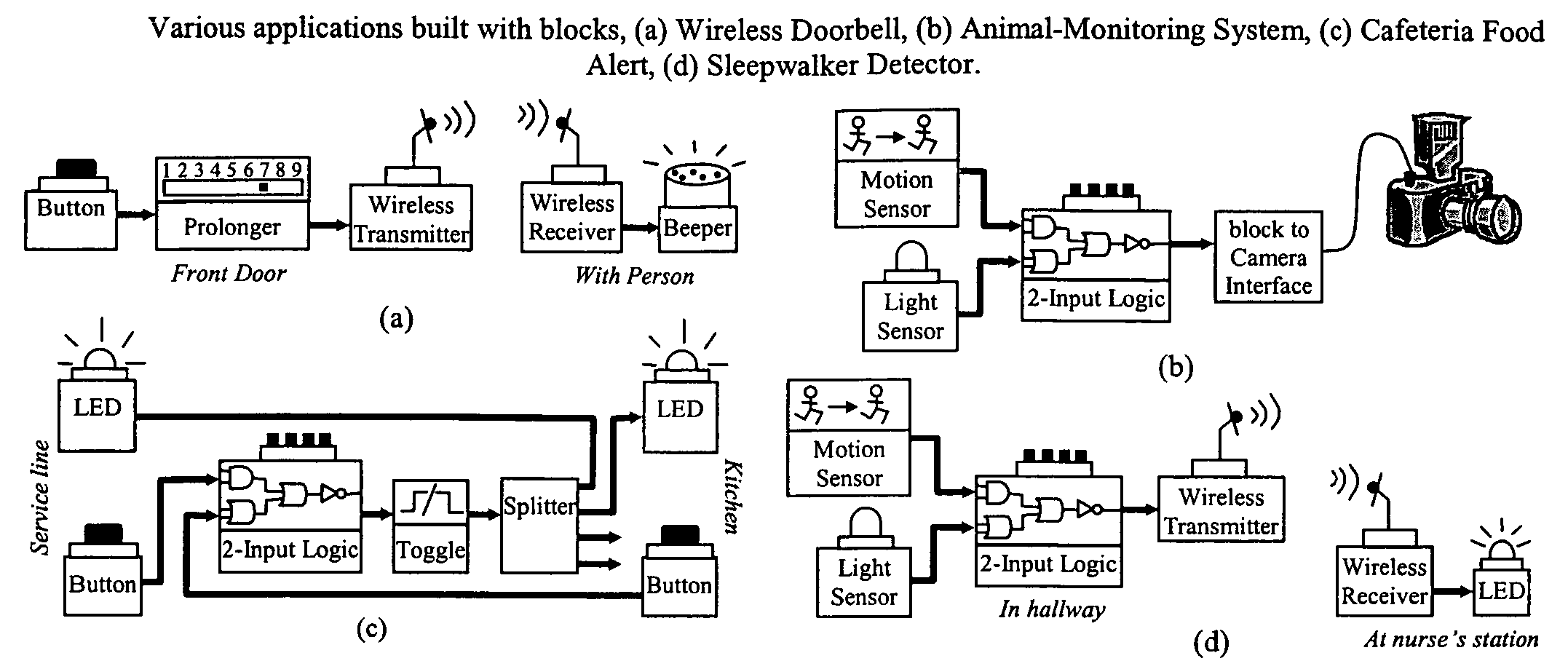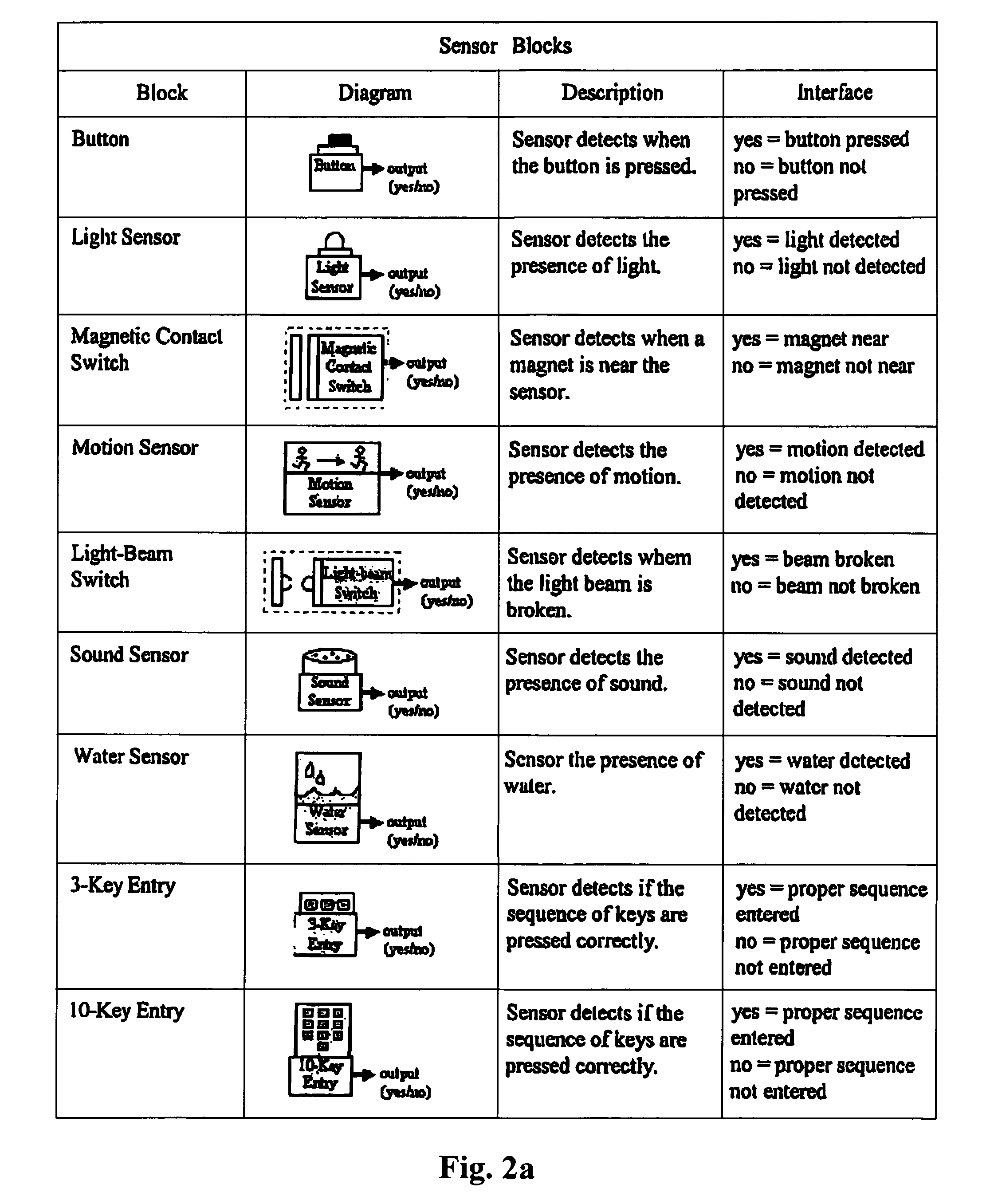Embedded electronics building blocks for user-configurable monitor/control networks
a technology of embedded electronics and monitor/control network, which is applied in the field of standalone embedded system building blocks, can solve the problems of inability to easily customize off-the-shelf systems and cost more than many people are willing to pay, and achieve the effect of not continuously draining power
- Summary
- Abstract
- Description
- Claims
- Application Information
AI Technical Summary
Benefits of technology
Problems solved by technology
Method used
Image
Examples
Embodiment Construction
Blocks / Modules
[0039]The modules of the present invention address a need of enabling people with little or no programming or electronics experience to build basic sensor-based monitor / control system and networks in a convenient and cost-effective manner. It should be noted that the terms “module” and “block” are used interchangeably herein.
[0040]In one aspect, certain modules according to the present invention includes a “dumb” component, such as a button, light sensor, motion sensor, LED, buzzer, etc., combined with a low-cost, low-power processor component such as a PIC microcontroller (costing about ninety cents) as illustrated in FIG. 1. Each module includes a standard interface, and modules communicate automatically when connected. In one embodiment, the processor component in each module is preprogrammed to execute a communication protocol as will be discussed in more detail below and a module's compute function, where needed. The communication protocol is used in both wired an...
PUM
 Login to View More
Login to View More Abstract
Description
Claims
Application Information
 Login to View More
Login to View More - R&D
- Intellectual Property
- Life Sciences
- Materials
- Tech Scout
- Unparalleled Data Quality
- Higher Quality Content
- 60% Fewer Hallucinations
Browse by: Latest US Patents, China's latest patents, Technical Efficacy Thesaurus, Application Domain, Technology Topic, Popular Technical Reports.
© 2025 PatSnap. All rights reserved.Legal|Privacy policy|Modern Slavery Act Transparency Statement|Sitemap|About US| Contact US: help@patsnap.com



